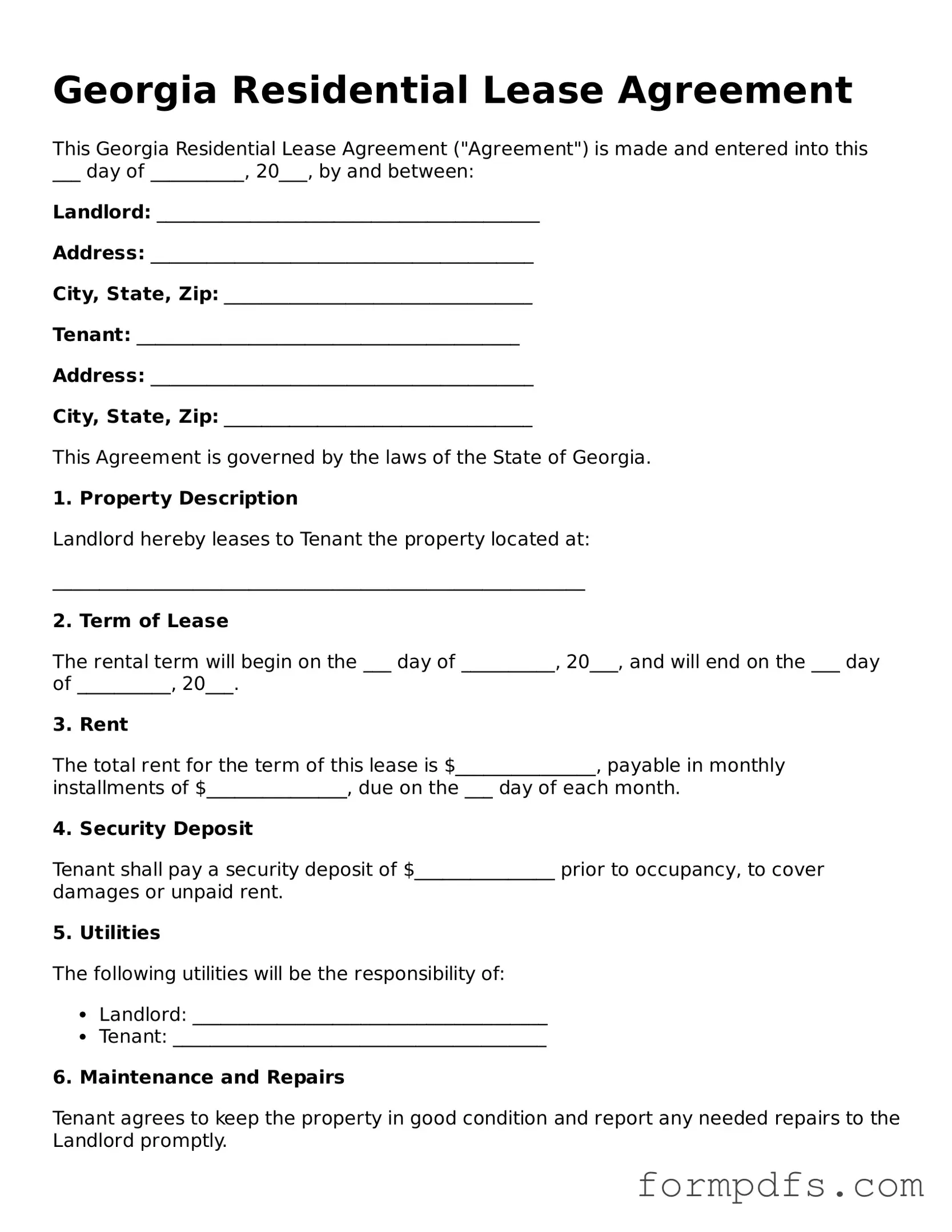What is a Georgia Residential Lease Agreement?
A Georgia Residential Lease Agreement is a legal document that outlines the terms and conditions between a landlord and tenant for renting a residential property in Georgia. It details the responsibilities of both parties, including rent payment, maintenance, and lease duration.
What information is typically included in the lease agreement?
The lease agreement usually includes the names of the landlord and tenant, property address, lease term, rent amount, security deposit, maintenance responsibilities, and rules regarding pets and smoking. It may also specify any additional fees or penalties for late payments.
How long is a typical lease term in Georgia?
Lease terms can vary but are commonly set for one year. However, landlords and tenants can agree to shorter or longer terms based on their needs. Month-to-month agreements are also an option, allowing for more flexibility.
Can a landlord increase rent during the lease term?
No, a landlord cannot increase rent during the lease term unless the lease agreement specifically allows for it. Rent increases can typically only occur at the end of the lease term when a new agreement is negotiated.
What happens if a tenant needs to break the lease early?
If a tenant needs to break the lease early, they may be responsible for paying the remaining rent until a new tenant is found or until the lease term ends. It's essential to review the lease for any specific terms regarding early termination and possible penalties.
Is a security deposit required in Georgia?
Yes, landlords in Georgia often require a security deposit. This deposit typically covers damages beyond normal wear and tear or unpaid rent. The amount is usually equal to one month’s rent, but it can vary based on the landlord’s policies.
What are the tenant's rights regarding repairs?
Tenants have the right to live in a habitable space. If repairs are needed, tenants should notify the landlord in writing. The landlord is generally required to address urgent repairs promptly, while non-urgent issues may take longer to resolve.
Can a landlord enter the rental property without notice?
In Georgia, landlords must provide reasonable notice, typically 24 hours, before entering the rental property. Exceptions exist for emergencies, where immediate access may be necessary to protect life or property.
What should a tenant do if they believe their landlord is violating the lease?
If a tenant believes their landlord is violating the lease, they should first document the issue and communicate their concerns in writing. If the problem persists, tenants may need to seek legal advice or contact local housing authorities for assistance.
